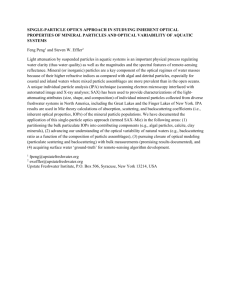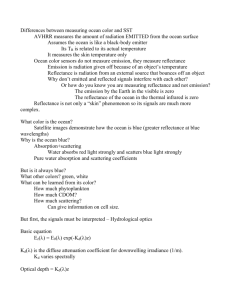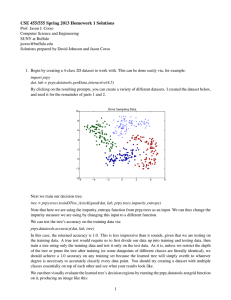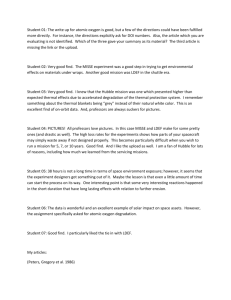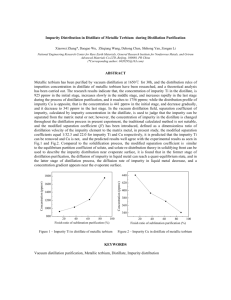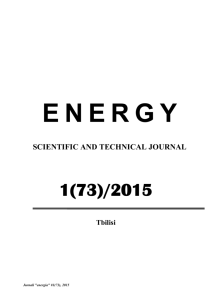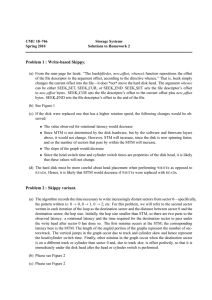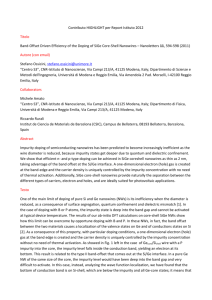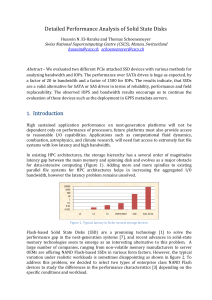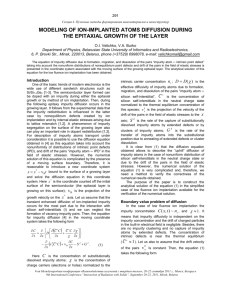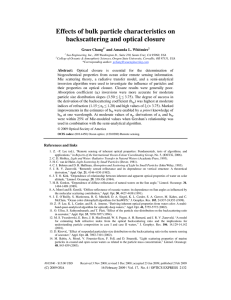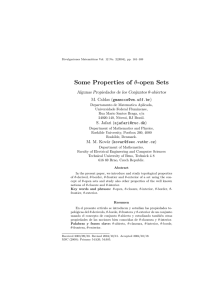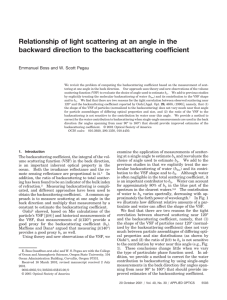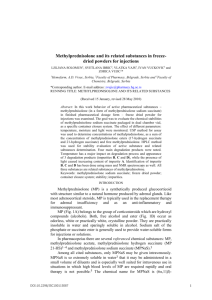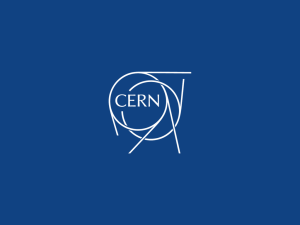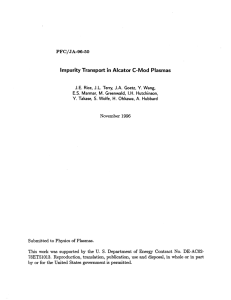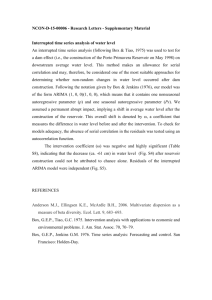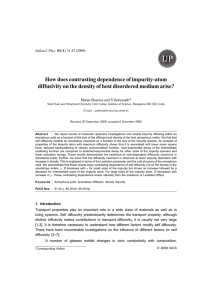Inferring Inherent Optical Properties and Ocean Impurity Profiles
advertisement
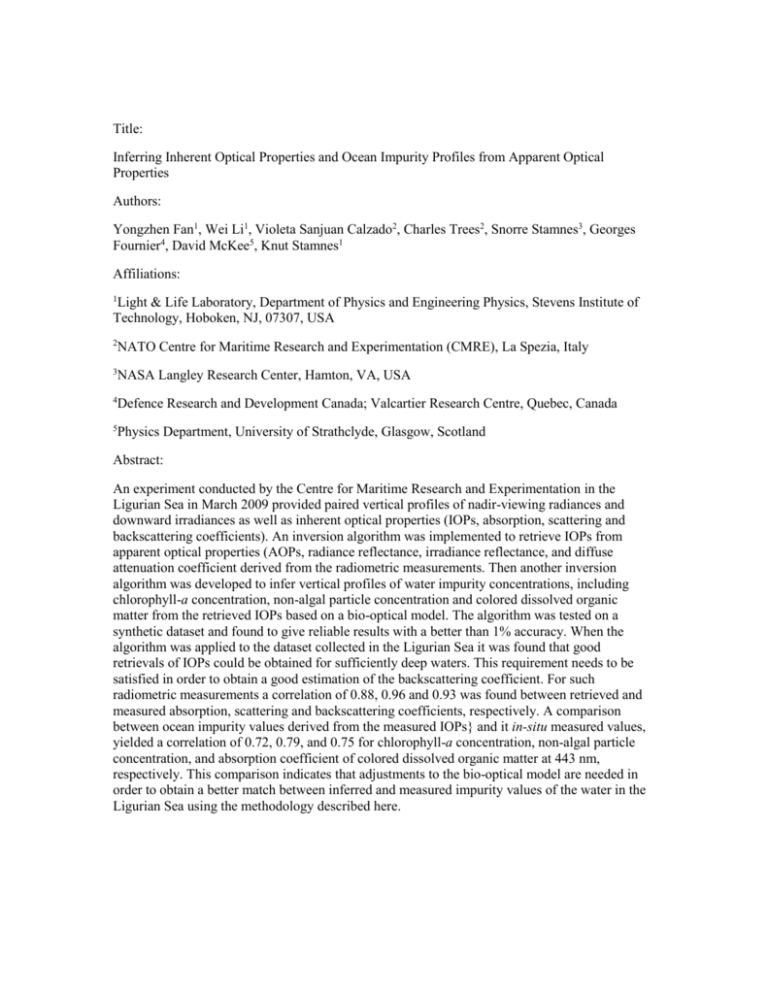
Title: Inferring Inherent Optical Properties and Ocean Impurity Profiles from Apparent Optical Properties Authors: Yongzhen Fan1, Wei Li1, Violeta Sanjuan Calzado2, Charles Trees2, Snorre Stamnes3, Georges Fournier4, David McKee5, Knut Stamnes1 Affiliations: 1 Light & Life Laboratory, Department of Physics and Engineering Physics, Stevens Institute of Technology, Hoboken, NJ, 07307, USA 2 NATO Centre for Maritime Research and Experimentation (CMRE), La Spezia, Italy 3 NASA Langley Research Center, Hamton, VA, USA 4 Defence Research and Development Canada; Valcartier Research Centre, Quebec, Canada 5 Physics Department, University of Strathclyde, Glasgow, Scotland Abstract: An experiment conducted by the Centre for Maritime Research and Experimentation in the Ligurian Sea in March 2009 provided paired vertical profiles of nadir-viewing radiances and downward irradiances as well as inherent optical properties (IOPs, absorption, scattering and backscattering coefficients). An inversion algorithm was implemented to retrieve IOPs from apparent optical properties (AOPs, radiance reflectance, irradiance reflectance, and diffuse attenuation coefficient derived from the radiometric measurements. Then another inversion algorithm was developed to infer vertical profiles of water impurity concentrations, including chlorophyll-a concentration, non-algal particle concentration and colored dissolved organic matter from the retrieved IOPs based on a bio-optical model. The algorithm was tested on a synthetic dataset and found to give reliable results with a better than 1% accuracy. When the algorithm was applied to the dataset collected in the Ligurian Sea it was found that good retrievals of IOPs could be obtained for sufficiently deep waters. This requirement needs to be satisfied in order to obtain a good estimation of the backscattering coefficient. For such radiometric measurements a correlation of 0.88, 0.96 and 0.93 was found between retrieved and measured absorption, scattering and backscattering coefficients, respectively. A comparison between ocean impurity values derived from the measured IOPs} and it in-situ measured values, yielded a correlation of 0.72, 0.79, and 0.75 for chlorophyll-a concentration, non-algal particle concentration, and absorption coefficient of colored dissolved organic matter at 443 nm, respectively. This comparison indicates that adjustments to the bio-optical model are needed in order to obtain a better match between inferred and measured impurity values of the water in the Ligurian Sea using the methodology described here.
